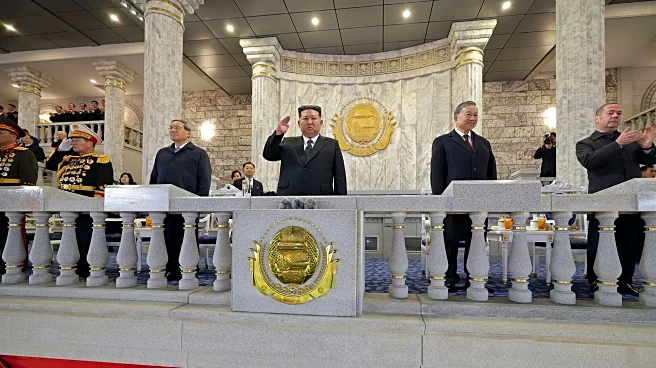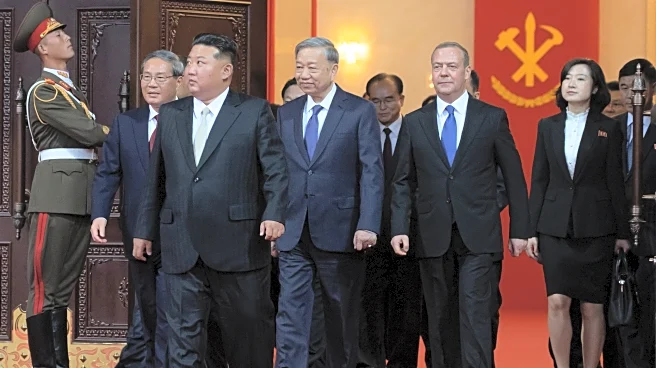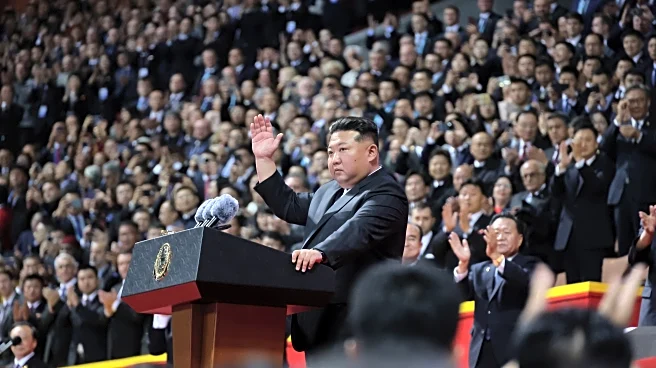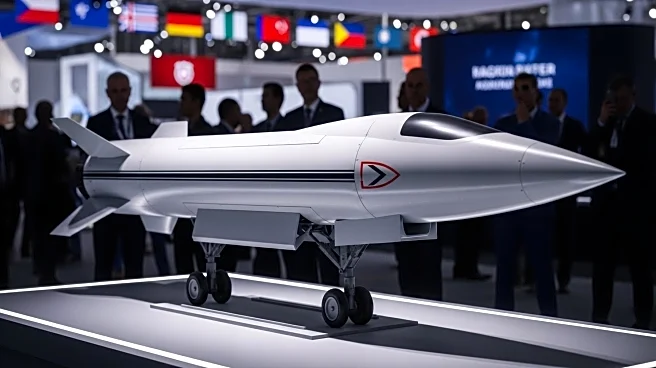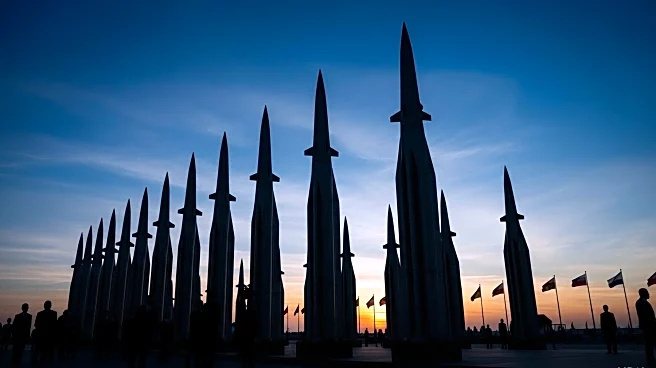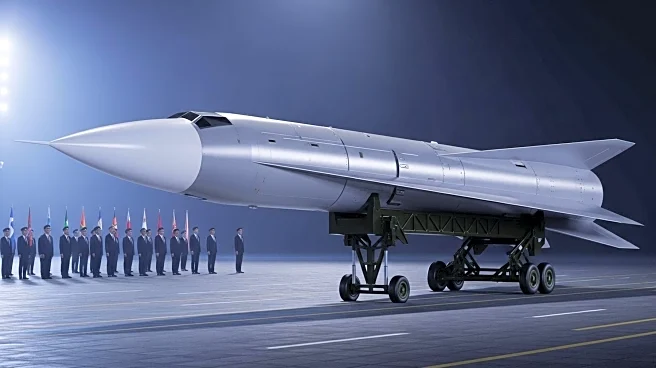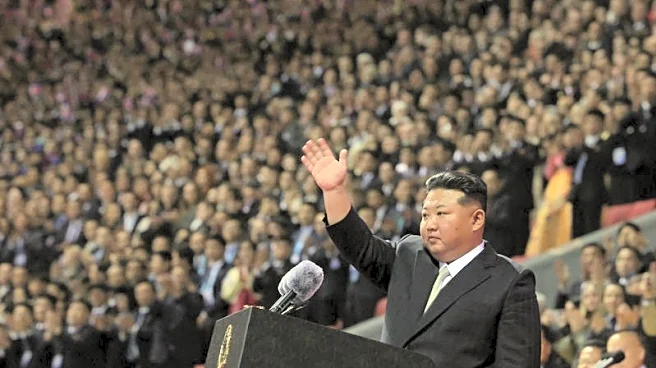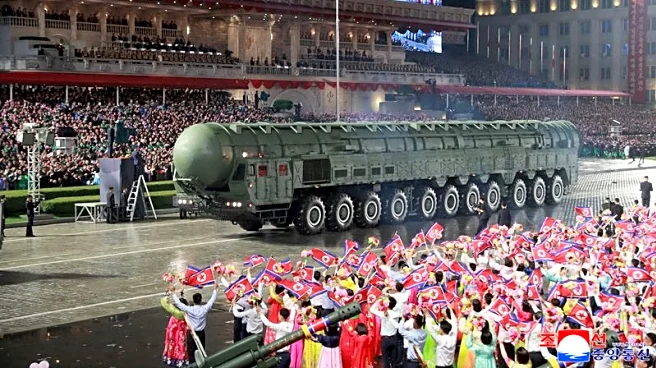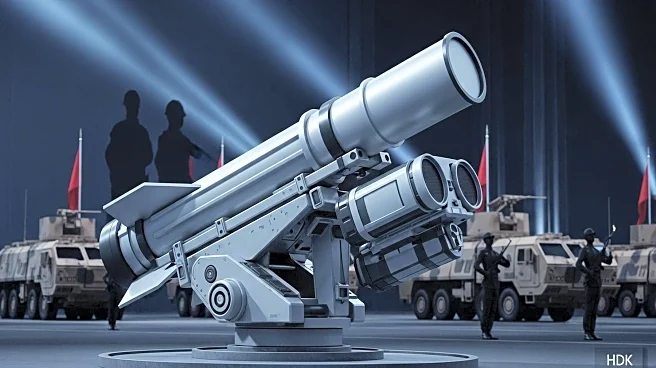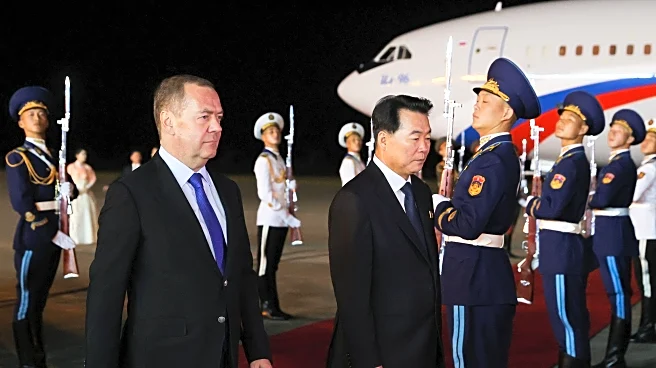What's Happening?
North Korean leader Kim Jong Un showcased a new intercontinental ballistic missile, the Hwasong-20, during a military parade in Pyongyang. The missile, described by the Korean Central News Agency as the 'most powerful nuclear strategic weapons system,' has not yet been tested. The parade marked the 80th anniversary of the founding of the Worker’s Party and featured various other missile types, including shorter-range ballistic, cruise, and supersonic missiles. Kim emphasized the need for the military to evolve into an 'invincible force' capable of eliminating all threats. The event was attended by foreign dignitaries such as Chinese Premier Li Qiang, former Russian President Dmitry Medvedev, and Vietnam’s Communist Party chief To Lam. Kim also met with Medvedev, expressing a desire to strengthen ties with Russia.
Why It's Important?
The unveiling of the Hwasong-20 missile underscores North Korea's ongoing commitment to advancing its military capabilities, particularly its nuclear arsenal. This development is significant for global security, as it may heighten tensions in the region and complicate diplomatic efforts aimed at denuclearization. The presence of foreign leaders at the parade, including representatives from China and Russia, highlights North Korea's strategic alliances and potential geopolitical shifts. Strengthening ties with Russia, especially amid the ongoing conflict in Ukraine, could influence international relations and impact U.S. foreign policy strategies in Asia.
What's Next?
The introduction of the Hwasong-20 may prompt international responses, including potential sanctions or diplomatic efforts to curb North Korea's missile development. The U.S. and its allies might reassess their security strategies in the region, considering the increased threat level. Additionally, North Korea's relations with Russia and China could evolve, potentially affecting global power dynamics. Future missile tests and military developments will be closely monitored by international observers, as they could further escalate tensions.
Beyond the Headlines
The parade and missile display reflect North Korea's broader strategy of using military advancements to assert its sovereignty and deter external pressures. The emphasis on military strength may also serve domestic purposes, reinforcing national pride and unity under Kim Jong Un's leadership. The event highlights the complex interplay of military, political, and diplomatic factors shaping North Korea's interactions with the global community.

